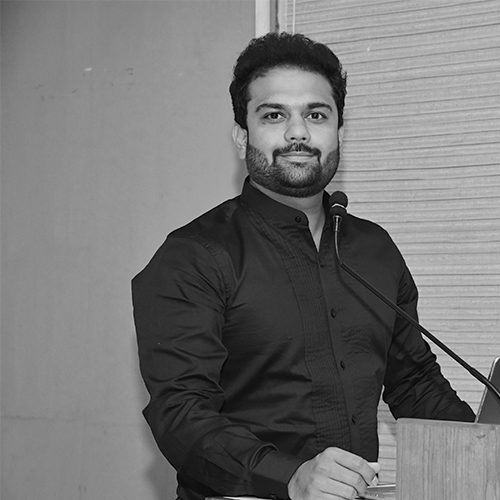New Media and the Young

Numerous studies have analyzed the pros and cons of using social media. The positives could be many, but it is the negatives that can have far-reaching consequences and therefore need to be dealt with. Let us take a look at a few.
Unfavourable Consequences
Dis-connect: The world of social media is a paradoxical one. On the one hand it allows users to reach out, express their feelings, needs and views and, on the other hand it can create a wedge in close relationships as the user often ends up spending more time dealing with virtual friends, friends who are likely to be more superficial and thus seemingly more accepting and encouraging. SNSs (Social Networking Sites) have become the “venue for teens to express and actualize their identities via self- disclosure (Livingston, 2008 as quoted in Young, 2017)”. Adolescence is an “essential period of socialization,” during which teens connect more with their peers than with people of any other age group (Young, 2017). No doubt, communicating with friends through social media helps teens to trade ideas, make new connections and gain the support of others, but “the desire to stay connected can come at the cost of developing real relationships or maintaining existing relationships” (ibid.).
Inflated Egos: As children and teenagers often find it more difficult to deal with real life issues, suggestions and criticism, these virtual friendships become more valuable. Thus the age when they develop social and psychological skills is lost to a world of ‘likes’ and validation. This indirectly helps to promote self-love and egocentrism. Growing self-absorption can have further harmful effects. Narcissism has been positively correlated to interaction through social media and online posting of content that promotes the self (Buffardi & Campbell, 2008; Leung, 2013). The dysfunctional aspects of narcissism have also been found to have a connection with instances of cyber bullying among adolescents (Ang, Tan, & Mansor, 2011).
Insecurity: An excessive need for validation also undermines the adolescents' self-esteem and self-worth and triggers insecurities. Children also feel insecure when they compare themselves unfavourably with their peers or even people they are not directly acquainted with. They tend to compare themselves with other children’s looks, clothes, material wealth, successes, fun activities, friendships, partners, social life, outings, family life, to name a few. This further worsens their mood, makes them irritable, frustrated, anxious and depressed.
Anxiety and Depression: The desire to be constantly updated on what their peers are doing ensures that the teenager stays hooked on to networking sites. It inadvertently fosters voyeurism. Apart from preventing them from finishing their designated tasks and undertaking any constructive work, it can result in greater anxieties and insecurities. It can pave the way to internet addiction.
Body-consciousness: In a bid to become more popular among their peers. Teens often upload pictures or videos of themselves (often filtered), that do not reflect their true selves. This gradually impinges on their understanding of their real self as they now begin to compare themselves unfavourably not only with others but also with their own digitally modified image. Body shaming is common among youngsters. Modified images lead to an increase in dissatisfaction with themselves, a lowering of confidence and can also lead to feelings of inferiority and depression.
Trolling: Social media provides anonymity and users can easily vent their resentment without fear of being caught. It not allows them to tarnish their victim’s reputation by posting hate messages or spreading false information against those they dislike or feel inferior to and also bully them online. Although self- expression is possible on the social media, there are chances that the teenager reveals more than she needs to reveal. It is platform that permits people to connect and be connected - to undesirable elements also. Privacy is at risk and the unsuspecting teenagers. The Office of Communications (Ofcom), an independent regulatory body, recently said that the proportion of 12 to 15 year-olds who reported being bullied over social media rose from 6% in 2016 to 11% last year (Adams 2019).
Detrimental Associations: Often, adolescents and children become victims of cyber-bullying, stalking and other criminal activities. Teenagers already dealing with multiple stressors can get in touch with others who can worsen their situation. Thus certain friendships can eventually be more harmful as they actually encourage self-harm or suicide. Children also inadvertently learn to behave and react in such a manner from their deliberate or accidental exposure to certain materials (graphic violent or sexual content, for instance) and interactions.
Addictive escape routes: Social media provides instant escape from stressors. The smart phones have made it easier for the teenager to escape pressing demands and responsibilities. This can affect their social skills as when faced with a conflict or challenge, instead of understanding and dealing with it, they escape their inner agitations and frustrations by taking recourse in activities like chatting, watching videos, playing games and browsing the internet. The games too are so designed so as to keep the individual continue the game with intermittent rewards. It can lead to unfinished work, low productivity, procrastination (and the resultant frustration), disturbed sleep and also obesity. Eating disorders are also common in teenagers who spend more time on their phones. One of the unfortunate consequences of such quick escape routes and quick access to games and entertainment is also the diminished capacity for self-control and impulse-control. The mobile phones have made gratification that much faster and easier.
Sidelining the Challenged: As social media is predominantly used by teenagers to connect with each other, children with certain debilities may feel marginalized, and thus become isolated. This leads to inevitable feelings of loneliness and depression.
Biased and selective searching: Although social media is a source of infinite information, children tend to be extremely selective in their search and thus limit their knowledge (Chamorro-Premuzic, 2014).
Inappropriate and incorrect information: Social Networking Sites also provide children with information which is not appropriate to their age. It also gives them more opportunities for misrepresentation and deception. Many children misreport their age while opening an account on Social Media, in order to gain access (Young 2019). This has led to improper and sometimes deviant behaviour both online and offline.
In the next section we will discuss the differing impact of Social Networking Sites on boys and girls







